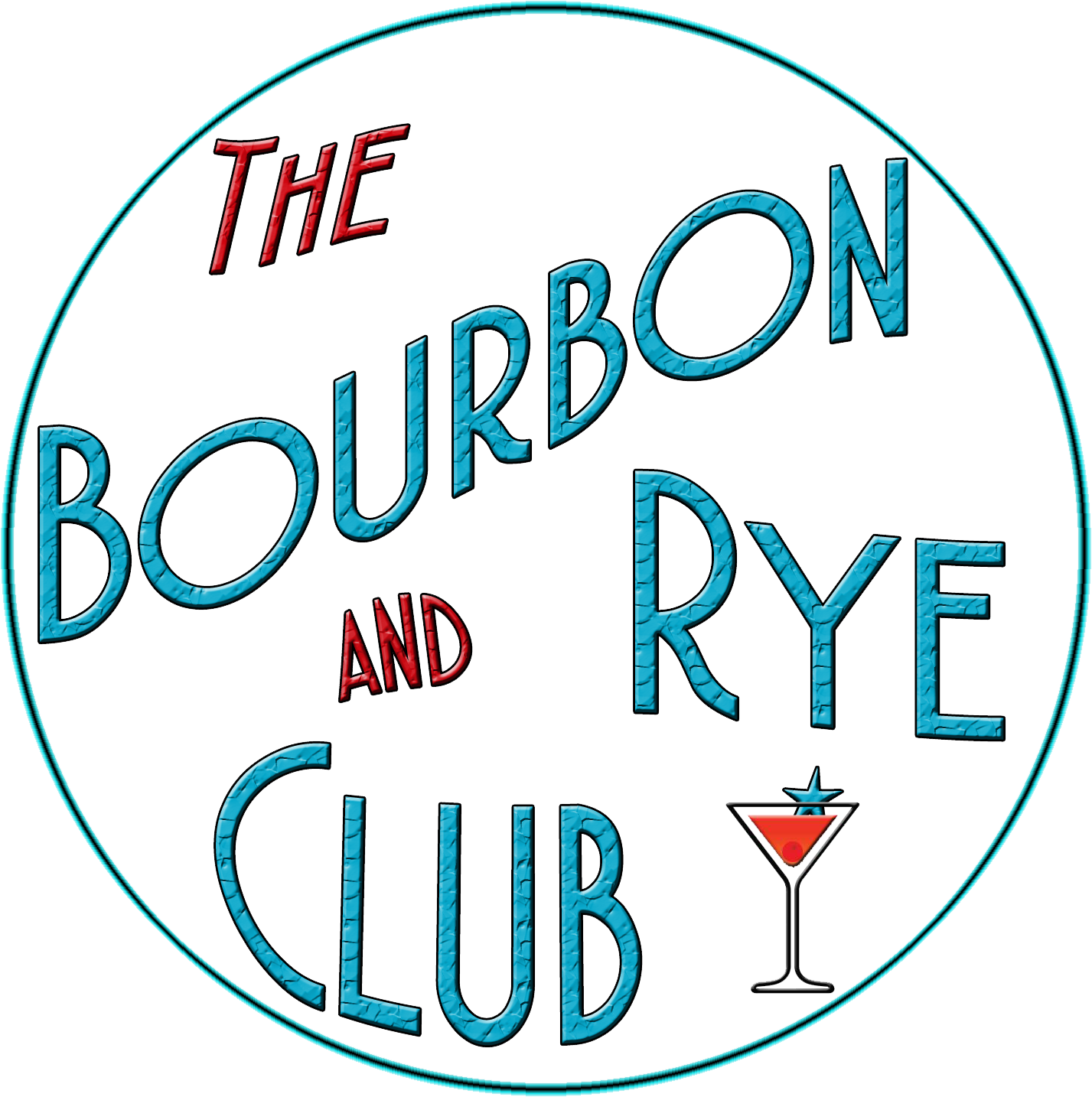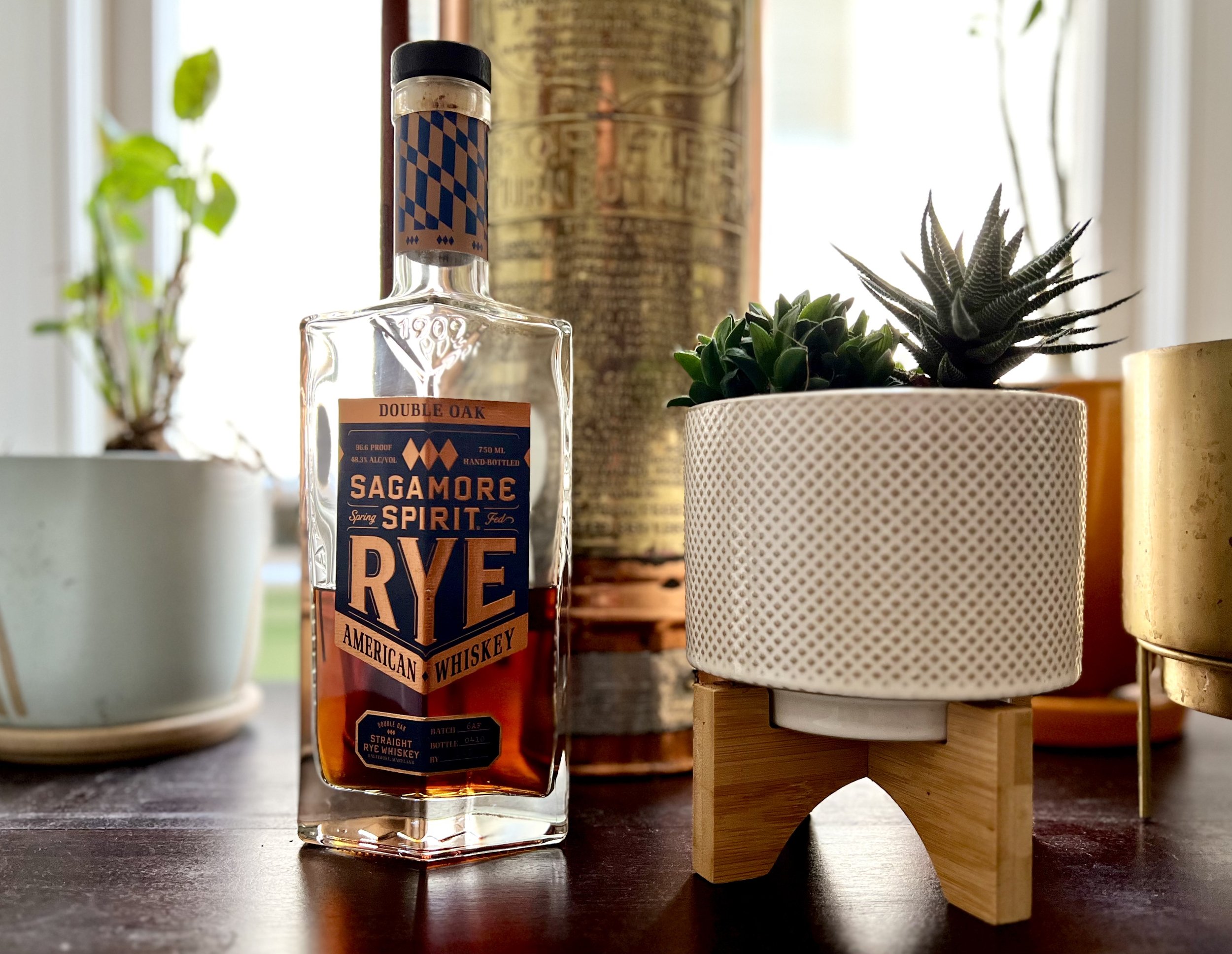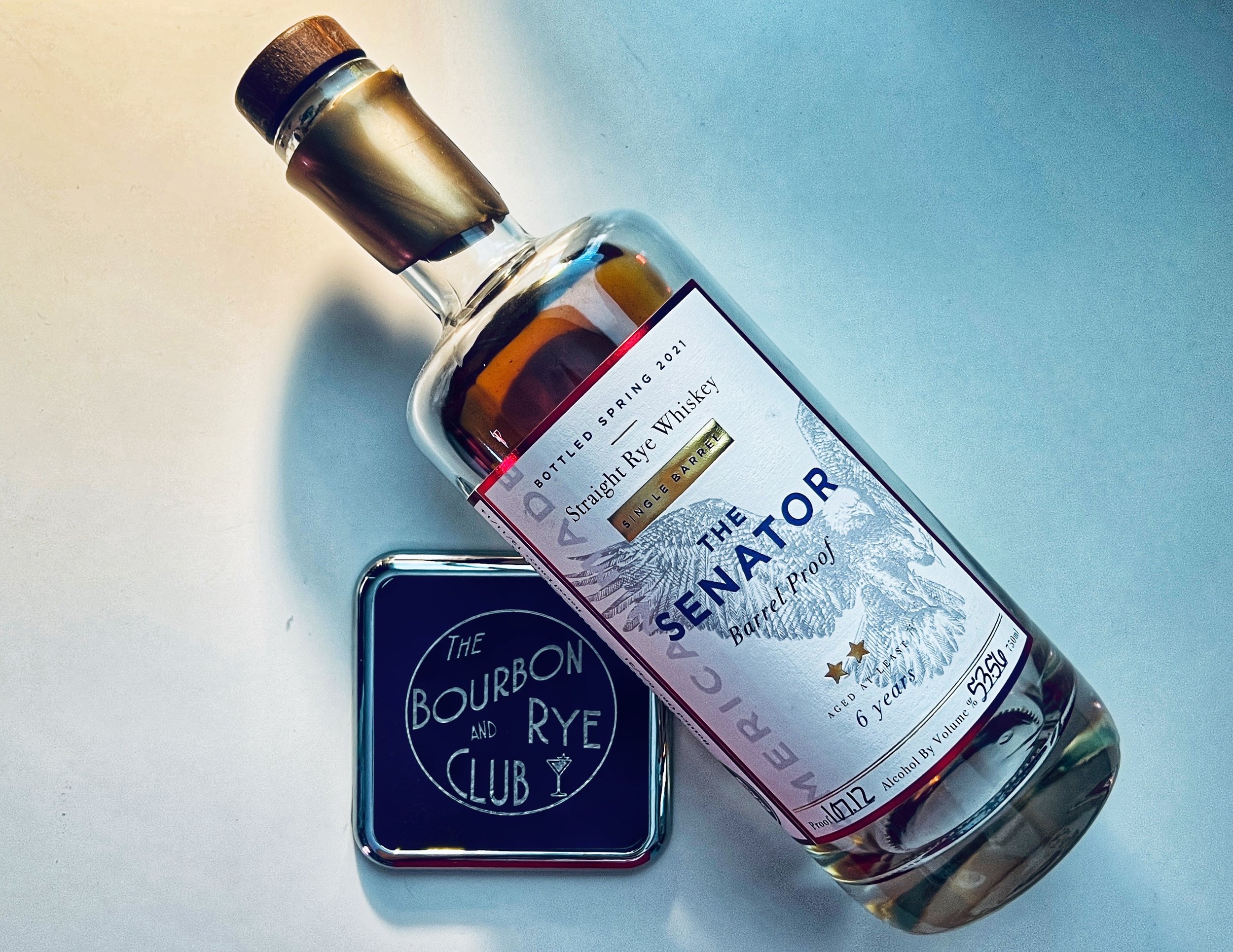The Six Essential Ryes
I’ve been writing this feature in various forms for almost 18 months. It’s been a struggle. I started it, saved it as a draft, edited, saved, revisited, and ultimately scrapped it and started all over again several times. With each version it reliably devolved into a “best” list that fit my then current mood or became an ego driven flex list on the best Ryes I had in the house (oh Redemption 18 Ancients….).
I generally despise “top lists” and “listicles” because they’re easily created, disposable, interchangeable and forgettable. I didn’t want to write something like “My top six Ryes for a Tuesday night while watching Below Deck Med on Bravo in goblin mode.”
I didn’t want to create another article in the UPROXX style of clickbait. I wanted to do something more, something more meaningful to me. I wanted to write something more expressive of how I felt about the Rye category. Something I would want to read, and would have found useful if I was somehow just now beginning my Rye journey. A conversation I had recently with Whiskey Spectre about what a “bar reset” might look like (will be doing a short on this soon) changed that, and gave me the inspiration I needed.
This couldn’t be a starter list, or a list of Rye whiskey to try if you’re a Bourbon drinker. It had to be an essential list that represented a wide range of styles, and not a list of the “best” which is always subjective, and frequently argued to no end without agreement.
This essentials list are the Ryes that I always have on hand, that I just can’t live without. I drink these the most frequently, at home and at bars if they have them, always having a backup whenever possible. These aren’t the most unicorn bottles ever, yes, I have some, but they cannot be essential to me if I can’t find them with little difficulty. These aren’t basic, these aren’t starters, these are essential.
The list includes a good representation of most of the major styles of rye (sorry Empire, you’re damn good, but there is no elevated example to make this list). It runs the gamut from Canada, to Kentucky, to Maryland, to Tennessee, to Indiana, so there’s something for just about everyone. I didn’t set out to include majors and micros in any sort of balanced portfolio, I strictly went with what I cannot live without.
There are many terrific micros out there that didn’t make this list like Frey Ranch, Kings County, Fort Hamilton, Dad’s Hat (shoutout to Amy), Union Horse, 291… Also there are many small to mid-sized that didn’t make it, Castle and Key, New Riff, Kentucky Peerless…. And I had to leave out some very popular favorites that easily could have avoided being cut, like Knob Creek. I also left off the specials, like the exquisite Barrell Seagrass or the seasonal favorite Midwinters Night Dram. This list will likely provoke some outrage at a treasured rye being left out, I hope so, I hope that it challenges you the reader to narrow down your own essential list.
Without further ado, here’s mine.
Can you believe this came in at 126 proof? The more recent releases are notably lower proof, but still terrific.
Willett Family Estate 4-year Rye. The outlier.
This is the only reliably attainable Family Estate Rye coming out of Willett, and it’s also the most overlooked for some strange reason. Change that 4 on the label to a 5, and David Farging Copperfield arrives to triple the price and make it vanish. The difference in the flavors from years 4-5 is there, but it isn’t stark and certainly not deserving of the premium price increase.
This Rye is a strange rye, incomparable to anything else on the market, and it straddles the gap between Canadian rye (it has that mint and grassy note) and Kentucky Rye (try a side by with literally any Kentucky Rye, and you’ll see just how different it is.). Internet people tend to skip over this for the most part, and I have no idea as to why. Thankfully these bottles tend to sit awhile, as we Willett insaniacs slowly and quietly deplete the shelves, not to hoard or flip, but to drink.
This bottle satisfies a small sliver of the rye whiskey corner of the world. As everyone else chases the elusive Purple Tops, the “in the know” fans quietly drink this most excellent Willett Rye, without tearing gigantic holes in our wallets. Want one of the greatest Manhattans ever? Use this rye and never look back.
Mullets looks better in fishnets.
Stellum Black Label Rye. The five tool player.
Let me begin by stating that I am an unapologetic Barrell insaniac! I had my work cut out for me finding the essential rye from this little company that seemingly can do no wrong. I could easily have selected the freaking unbelievably epic Barrell 14-year-old Canadian ryes, but they have discontinued that expression so I landed on this terrific blended rye that includes Tennessee, Indiana, and Kentucky barrels.
Why did I settle on the black label over the standard Stellum Rye? Because it’s older, more rich and complex of course, but mainly because the aromas coming out of the glass are so tantalizing. Most drinkers care more about the flavors and finish than they do about the nose. This is one of those bottles where the nose IS the point.
While it certainly delivers on a wide variety of flavors, and the finish is sublime, the scent of the thing demands that you nose it frequently while sipping. This is the type of rye that forces you to slow down and appreciate all aspects of the liquid in the glass. The beloved Mullets black label is the rye that has all the tools, it’s a complete player with no gaps, no flaws, and impresses with each glass making it an easy essential.
This particular pig was from Maria’s in Michigan and it was legend.
Whistle Pig 10-year-old Single Barrel Rye. The Canadian Tuxedo.
I have a fundamental respect for a brand that was one of the very first to elevate Rye whiskey when the category was lost in the wilderness. After all the legendary ryes had disappeared (Vintage, Rittenhouse 21,23,25… Black Maple Hill…), Whistle Pig emerged. Priced at a then premium $99, the Pigs coming out had some very memorable Indiana whiskey that many still long for. I’m not here to wax poetic about another MGP offering. I’m here to talk about the currently available and incredible Canadian rye single barrels that define the northern style category to a large portion of the American audience who really only know about the degen from up-country that is Crown Royal.
The 10-year age stated single-barrels (especially the store picks) have often held older than 10-year-old whiskey in them (many stores don’t even know it’s older than 10!). I have a few myself that are 17 and 18-years-old. The prices are generally $100 or so, which used to be a very premium price, but now is an outright steal when you consider what a ten year Willett would cost you (if you could find it at all), or even a 7 or 8-year-old MGP release.
While the northern style rye is very different than the Kentucky or Indiana stalwarts, it is still recognizably rye to just about everyone. It’s more delicate and approachable than other well aged ryes, but still has complex layers that take time to be deciphered. I believe these Pigs to be some of the best things from Canada that’s ever been bottled. It’s typically a bit more minty (there’s very little dill if ever in Canadian) and bright while still showcasing the earthiness of the grains.
I find WP10 to be more representative of the beauty of Canadian rye than the superb Alberta Premium’s that the high proof snobs rave about. This Canadian Tuxedo is something I’ll proudly wear on any occasion. To me, it’s essential.
That Whiskey Spectre sure takes a fine photo.
Sagamore Spirit Double Oak Rye. The people’s champion.
First of all, it’s TOASTED (fight me).
Over the last few years, I’ve had the opportunity to expose people to the joys and possibilities of rye whiskey. Sagamore is always something I suggest when showcasing rye to folks that are rye curious, or rye passionate. While the range of offerings from Three Diamond always please, people almost always settle on Double Oak as their preferred expression.
Choosing this over Cask Strength was a minor difficulty for me, because I personally prefer the cask strength, but the Double Oak is almost universally beloved even amongst the high-proof snobs who marvel over how abundant the flavors are in this non-hazmat proof rye. People that think they don’t like rye, often fall head over heels for Double Oak. It’s a gateway rye, it opens the explorers mind to the wonderful world of the United States original national spirit.
While it’s not the official Signature Sag, I find it to be the absolute best introduction to the Sagamore Spirit lineup, and it actually gets people to buy a bottle, replenish it when finished, and to try the other varieties in the lineup. Double Oak really allows you to see the skill of the maturation and blending team at Three Diamond, and offers a glimpse of what is in store when one inevitably tries the various finishes they put out. Likely one of the most complex and approachable ryes on the market, Double Oak also allows you to up your cocktail game without resorting to gimmicks (smokers…). Seriously, make your old’s and Manhattans with this one and see why the people keep coming back to this over and over and over.
Old Overholt 114 proof rye was initially in Pennsylvania and Ohio exclusively. No more. It’s national now, so get yours.
Old Overholt 114 Rye. The Kentucky Colonel of the Rye Brigade.
Of all the selections on this list, this might be the one that provokes the most passionate discussion. The voices crying out for Knob Creek, Pikesville, Michter’s, Russell’s, Old Forester, etc… will be loud. How is it that I could land on this to represent Kentucky style Rye when there are so many terrific choices?
For me it’s quite simple. Old Overholt 114 Rye punches up. Put it up against any of the other Kentucky Rye’s, and I’ve got good scratch that Overholt beats most of them, and the ones it doesn’t are priced much higher, or are much older. This is the Sugar Ray Leonard of Rye. Pound for pound, it’s the best there is.
There are a plethora of versatile and affordable cocktail Rye’s out there, and Overholt has two very good ones already in their own lineup. I believe the 114 is the crown jewel. Just try an old fashioned with Overholt 114 Rye, and you are living the life. This is what Don Draper would’ve drank if he was a real living person! You don’t have to be a mixologist to easily elevate your cocktail game, just use Old Overholt 114 Rye.
Good in cocktails you say? Isn’t that influencer double-speak to clue the reader in to the fact that it’s not good on its own and allows the poster to avoid offending the distillery? In many cases yes, and I make no apologies for recommending this as a perfect well whiskey for cocktails, however, this Rye is brilliant neat, with drops of water, or with a very large cube. I find this to be definitively the perfect expression of Kentucky Rye and I cannot believe it is not more universally championed by the internet people.
This Senator gets my vote.
The Senator. The incumbent.
Out of a crowded field of rye whiskey coming from a certain industrial marvel in Indiana, how is it possible to settle on just one MGP as essential? There are so many to choose from. Pinhook vertical series? It’s great and getting better absolutely. Micro-distilleries from all corners of the country that source? Yeah, sure fine and all that. Rossville Union? Yep, fabulous. Smooth Ambler? Yep, also terrific. The brand that shall not be spoken of? I will forgive you if you chose any of those except the brand that shall not be spoken of (I still stand with Hollis after all), but I find that not all MGP offerings are alike, and this one stands above the rest.
I have found that the prime example of the goodness that is MGP Rye is manifested in the Senator from Proof and Wood. Six years old is right where MGP rye blossoms from a merely good rye, to an impressively great one. At six years, you see the dill start to become less aggressive and allow some other notes to emerge and delight.
Chocolate and bitter notes like the pith of an orange are the stars here, offering one the opportunity to make a very minimalist cocktail out of it. Personally, you should make at least one cocktail out of this bottle just to experience it, but it excels neat, or with a few drops of water. If you really want an MGP cocktail rye, you have plenty of choices out there, (Roulette is also Proof and Wood and slaps at less than $25 a bottle), but be sure to try this one too.
You get bonus points if you find a single barrel store pick, but the standard is the essential here, and it’s something I continue to happily repurchase
Just a reminder that every single Bourbon cocktail gets forty-seven times better when you use Rye. This is science in the 21st century.
That’s it, that’s the list of essential Rye whiskey for me. I would love to hear your thoughts here in the comments. Feel free to let me know if you agree with some or any of my choices, and also what you might disagree with. Or tell me a joke.
As always, thank you for dropping by and sharing your time with me.
- Mickey Pinstripe







